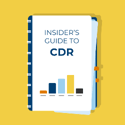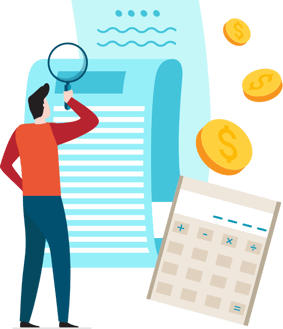Why Do Cohort Default Rates Matter?

Cohort default rates (CDRs) are one of the tools the U.S. Department of Education (ED) uses for holding colleges and universities accountable for their students’ ability to repay their federal student loans. Every year, ED publishes CDRs based on the percentage of a school’s borrowers who enter repayment on Federal Direct Loan Program loans during a federal fiscal year (i.e., Oct. 1-Sept. 30) and default within three years of beginning repayment. The idea behind this calculation is that it measures how well schools are setting up their students for success. Student loan borrowers who struggle to repay their student loans may not have received the education or support needed to establish a good career that provides the income needed to thrive outside of school.
Consequences for Colleges and Universities with High CDRs
When it comes to high CDRs, colleges have more to worry about than just damaging their reputation. They also worry about sanctions that remove eligibility for the Federal Direct Loan Program and Federal Pell Grant Program for a set time.
With current sanctions, if a school’s three most recent official CDRs are 30% or higher for the three-year calculation, the school will lose Federal Direct Loan Program and Federal Pell Grant Program eligibility for the remainder of the fiscal year in which the school is notified and for the following two fiscal years (Source: fsapartners.ed.gov). The same sanctions are applied if a school’s current official CDR is higher than 40% for the three-year calculation in one year (Source: fsapartners.ed.gov). For the latter group, this means only one official CDR could terminate their participation in the program for multiple years to come. The impact to a school that can no longer offer federal student loans could be devastating given that over 50% of students who complete an undergraduate program use federal loans at some point to do so (Source: educationdata.org).

Check out this free guide.
Student and Taxpayer Protections
Federal student loan default harms borrowers’ credit and financial future. Since most federal student loans are backed by taxpayers, defaults also increase the overall costs for the public. ED’s monitoring of CDRs helps policymakers, and ED, spot schools where students are most at-risk of default, and intervene if needed.
CDRs give students and families insight into how well schools prepare graduates for successful student loan repayment, which promotes transparency and accountability.
The False Security of CDR’s Recent Downward Trends
CDRs have been steadily decreasing over the last decade where the highest national rate reported was 11.5% for the fiscal year of 2014 (Source: fsapartners.ed.gov). Initially, a lot of the decrease could be attributed to colleges putting a new focus on student loan repayment and default prevention. However, those best practices, while incredibly valuable, aren’t what’s impacting the historically low rates schools saw in 2024. Many schools started to celebrate when ED released reports for the 2019 fiscal year reflecting a 5% drop in the national rate (Source: fsapartners.ed.gov). And when the report for 2020 was released in August 2023 showing the national CDR was down to 0%, some schools may have started to feel a false sense of security (Source: fsapartners.ed.gov).
The reality is that the CDR was a direct result of the payment pause put in placed on Direct loans and other federal student loans held by ED in response to the COVID-19 health crisis from March 2020 until September 2023. Borrowers were not required to make payments, so no one could technically default on any ED held student loans during that period (Source: https://blog.ed.gov/). It created an artificially low default rate across the board, masking the financial fragility of many borrowers.
2025 and Beyond
As payments resumed in late 2023 and into 2024, millions of borrowers faced a sudden shift in their monthly expenses. Many were required to make student loan payments for the very first time. This newness, combined with forthcoming changes to the student loan repayment plan landscape doesn’t bode well for student loan repayment success. Additionally, many borrowers are struggling to reallocate already tight budgets, especially amid inflation, rising housing costs, and wage stagnation.

Early signs in 2024 showed rising delinquency rates (borrowers missing initial payments), a leading indicator of future defaults. Additionally, ED again began reporting late or missing payments to the national credit bureaus in January 2025.
Servicers are overwhelmed, and communication gaps are leaving borrowers confused or unengaged and the results are grim.
- Close to half of the nearly 35 million borrowers who should be making payments actually are (Source: NY Times).
- Interest started accruing again in August 2025 for roughly 8 million borrowers in the SAVE plan (which will be eliminated by July 2028) and in a forbearance status as a result of the SAVE litigation.
- ED has warned that nearly 10 million borrowers — representing almost 25% of the $1.6 trillion federal loan portfolio — were headed for default with the potential for wage garnishment, tax refund offset, or other collection actions (Source: ED).
Colleges and Universities are Concerned About Rising CDRs
These projections signal a looming fiscal and social crisis, with serious credit and economic consequences for individuals, and potential institutional repercussions for colleges due to accountability metrics and public perception.
- Accountability Metrics Are Tightening. ED and policymakers are increasingly holding institutions accountable for poor student loan outcomes. Also, proposals for “gainful employment” and “value-added” metrics mean institutions with high CDRs could face sanctions or funding loss.
- Reputational Risk. Rising default rates among former students can damage a school’s reputation, affecting rankings, student recruitment, and donor support.
- Impact on Enrollment. If prospective students perceive that former students struggle with repayment, they may opt out of enrolling or choose cheaper alternatives (e.g., community colleges, trade schools, or online programs).
- Access. Rising defaults disproportionately affect low-income and minority students, especially at community colleges and minority-serving institutions.
Summary
Low default rates during the COVID-19 health crisis and for a few years afterward were not a reflection of borrower health — they were the result of temporary policy interventions. With the resumption of repayments and many borrowers under financial strain, colleges and universities must prepare for an uptick in defaults that could threaten not only their reputation but also their financial and regulatory standing. Proactive financial counseling, transparency about loan risks, and stronger outcomes for graduates will be critical in the years ahead.
Need help getting your default prevention efforts up to speed?
Attigo by Ascendium can help. See how our support solutions help former students avoid delinquency and default while achieving their financial goals.